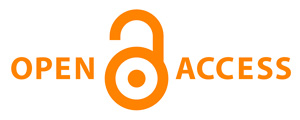CONTROL METHODS IN BASKETBALL TRAINING: CLASSIFICATION AND CHARACTERISTICS
DOI:
https://doi.org/10.31891/pcs.2025.1(1).78Keywords:
control methods, basketballAbstract
The article is devoted to theoretical aspects of characterizing control methods in basketball classes and their classification. Depending on the tasks to be solved and the volume of indicators included in the research program, the types of control are allocated (in-depth control - includes a set of methods, studies that provide information to assess the quality of the training process; selective control - is carried out using a group of indicators selected so that it is easy to obtain any information about the preparedness of those who are engaged; local control - evaluates relatively narrow parameters of motor training).
It is noted that in physical education and sports there are urgent, delayed and cumulative training effects. Urgent training effect - changes that occur in the body of athletes directly during exercise or in the immediate period of rest. Delayed training effect - changes that occur in the later phases of recovery (on the second day after exercise or in a few days). Cumulative training effect - changes in the body that occur over a long period of training as a result of summing up the immediate and delayed effects of individual training sessions. In accordance with the description of the types of training effect, control is carried out: stage, current, and operational.
Stage control allows you to evaluate the performance of basketball players over a long period of training. Current - aimed at changing physical condition indicators after a series of training sessions. Operational - informs about the reaction to the load of the training day.
It is noted that depending on the means and methods used, control can be: pedagogical; socio-psychological; medical-biological; medical. Self-control is of particular importance in the process of basketball training in order to assess the level of physical condition, intensity and adequacy of the means of the educational and training process, as well as its effectiveness.
Physical control is important to prevent fatigue, control endurance, and distribute energy throughout the match. Players need to control their own movements, coordination, and workload. Psychological control - players must be able to control emotions, especially in stressful situations, to avoid technical errors and misbehavior. Control by referees is necessary to ensure compliance with the rules, prevent violations and maintain fair play.
References
Mitova O.O. Sushko R.O. Methods of scientific research in basketball [second edition, supplemented and revised]. Dnipro: LLC enterprise “Driant, 2021. 266 р.
Bezmylov M. Completion of highly qualified teams in the conditions of internationalization of world basketball / M. Bezmylov // Theory and methods of physical education and sports. - 2016. - № 3. - Р. 3-11.
Chen, P. (2022). Application of infocommunication technologies in the assessment of students' academic achievements in the process of physical education. Scientific Journal of the Mykhailo Dragomanov Ukrainian State University. Series 15, (9(154), 123-127.
Tsyupak Yu. Methods of teaching basic technical techniques of basketball: Methodical recommendations. Lutsk: Volyn National University named after Lesya Ukrainka 2021. - 65 p.
Ivchenko O. M. The modern state of control of technical fitness of basketball players at the stage of preliminary basic training / O. M. Ivchenko // Bulletin of Zaporizhzhia National University. Physical education and sport. - 2016. - № 2. - Р. 127-132. - Access mode: http://nbuv.gov.ua/UJRN/Vznu_FViS_2016_2_21.
Basics of basketball. Study guide. O.A. Efimov, I.P. Pomeshchykova - Kharkiv: KhDAFK, 2011. - 108 p.
Krutsevych T.Y. Control in physical education of children, Control in physical education of children, adolescents and youth / T.Y. Krutsevich, M. Vorobyov. Vorobyov. - K., 2005. - 196 p.
Psychology: a textbook / [edited by Y.L. Trofimov]. - K.: Lybid, 2000. - 558 p.
Downloads
Published
How to Cite
Issue
Section
License
Copyright (c) 2025 Тетяна ЧОПИК , Максим ДЯКУН , Аліна ЧОПИК

This work is licensed under a Creative Commons Attribution 4.0 International License.





